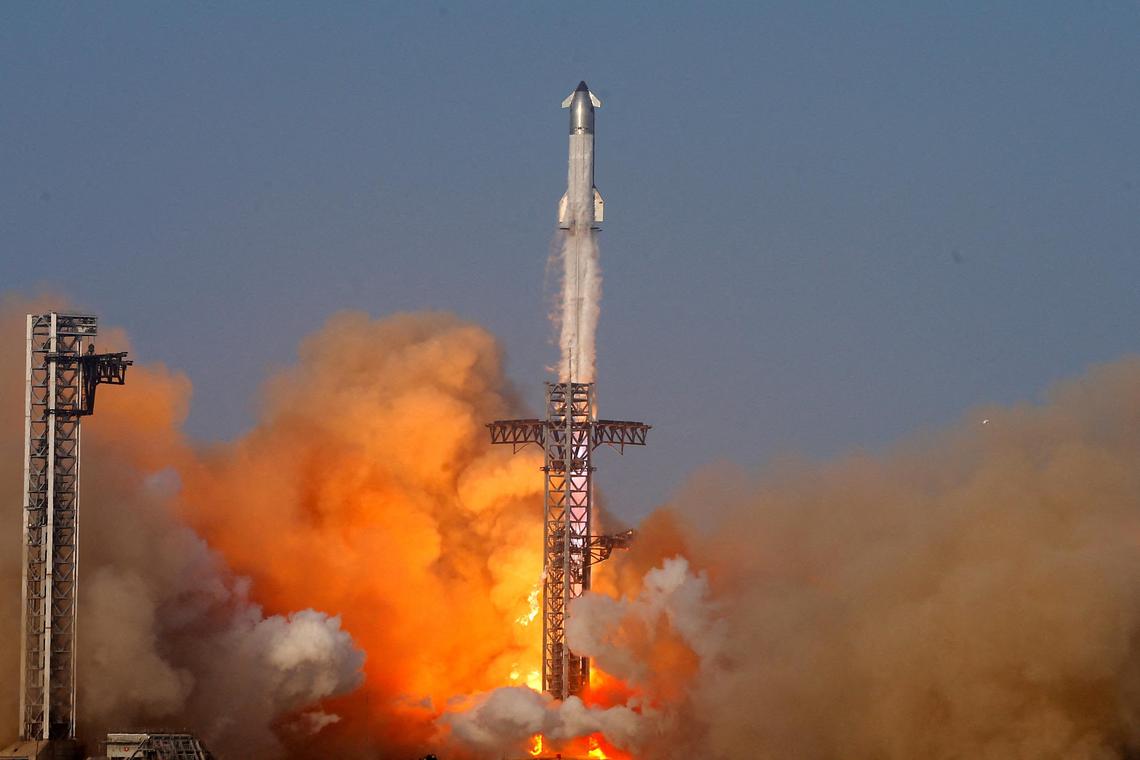SpaceX Rocket Explodes in Latest Setback for
Elon Musk’s Ambitious Mars Mission
A SpaceX rocket exploded during a
recent test flight, marking the latest in a string of technical setbacks for
the company's quest to colonize Mars and a setback for Elon Musk's aspirations
in space exploration. The event has sparked fresh worries about the obstacles
SpaceX may face before achieving Musk's goal of interplanetary travel.
High Hopes Shattered Mid-Air
Shortly
after taking off from SpaceX's launch complex in Boca Chica, Texas, the rocket,
which was a component of the company's Starship program, suffered a major
malfunction. The rocket drifted off course and caught fire in a matter of
minutes, causing rubble to fly everywhere.
Despite the fact that the launch was unmanned and no injuries were reported,
the explosion has once again shown how dangerous and unexpected space
innovation can be. Shortly after the accident, SpaceX confirmed the failure and
said the team is studying data to find out exactly what went wrong.
The business wrote on X (which used to be Twitter) that "we learn from
every test." "This will assist us in improving our systems for
upcoming flights."
A Setback, Not a Stop Sign
SpaceX
has experienced significant technical problems before. In actuality, failures
are now a common, albeit annoying, aspect of the business's growth. Several
early versions of the Starship program exploded during the takeoff or
landing phases, requiring engineers to make modifications and enhancements to
their designs.
Elon Musk has not lost hope in spite of the setback. Shortly after the explosion,
he posted on Twitter, "Trial and error is the key to success." Every
test provides important knowledge to us. Mars is challenging, but we're getting
close.
However, some argue that as Mars mission timelines get longer, several failures
could damage investor capacity and public trust.
Why Starship Matters
A
crucial part of SpaceX's long-term plan is Starship. Starship is planned as the
most potent rocket built to date, capable of carrying dozens of passengers and
heavy loads to the Moon, Mars, as well as and even further. It is "a fully
recyclable transport system for Earth-based and deep space missions," said
Musk.
Additionally, NASA showed interest in Starship, choosing it to help its Artemis
task, which will bring humans back to the Moon. A successful Starship
program could change the economics for future exploration and significantly
decrease the cost of space travel.
However, every failed launch raises questions about SpaceX's ability to
fulfill its lofty goals in the period Musk has vowed.
The Bigger Picture for Mars
Musk
has an ambitious plan for creating an independent civilization on Mars.
According to his previous statements, he wants to send the first manned trip to
the Red Planet this decade. But with so many technical, financial, and
regulatory obstacles to overcome, that timescale is beginning to appear more
optimistic.
The success of Starship will be vital to the Mars mission. It is logistically
challenging to transfer infrastructure and people to another planet without a
reliable, reusable heavy-lift rocket.
This most recent explosion is a defeat, but it also serves as a reminder of how
difficult going into space is. Building a rocket is just one part of reaching
Mars; another involves finishing a whole environment of systems that interact
under the
Investors and Public Reaction
The
investment community has thus far shown cautious support. The privately held
business SpaceX is valued at more than $180 billion and is still attracting
finance. However, the temptation to show progress that goes beyond aspirational
goals increases with every high-profile failure.
The public's response has been varied. Many respect SpaceX's boldness and
transparency, and they value the company's openness to talk about both its
triumphs and failures. Others doubt Musk's timeline for survival and
safety, especially in light of the use of taxpayer funds through NASA
agreements.

Comments
Post a Comment